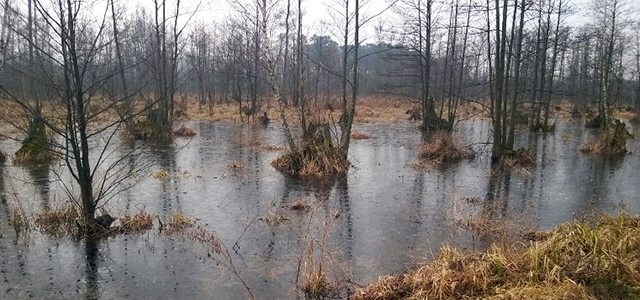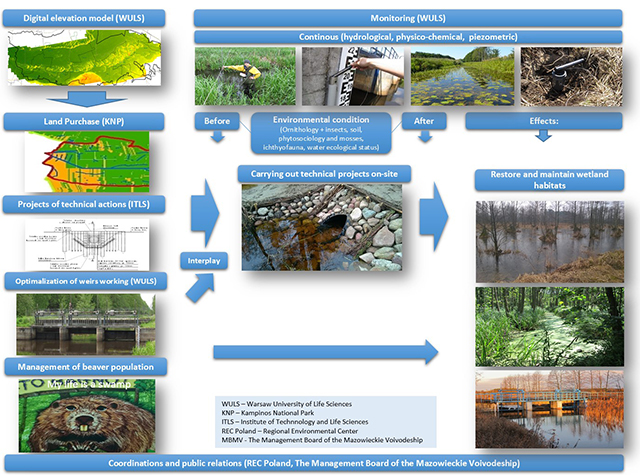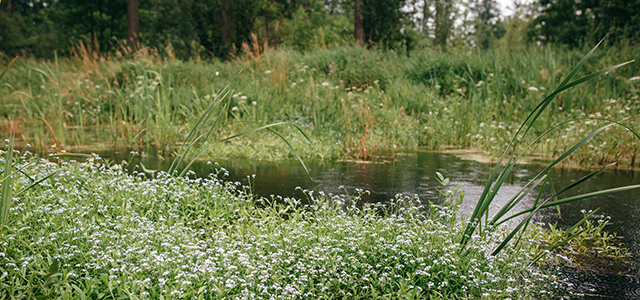A large area of wetlands in the Kampinoski National Park, situated close to the capital city of Warsaw, was gradually drained over time. These changes of the water regime in the park have occurred due to the melioration works, which took place in the mid-War period in the 20th century. Many of them were related to the regulation of small watercourses, the construction of melioration ditches and canals for meadow drainage.
In 2013, Warsaw University of Life Sciences (WULS), an active GWP Partner in Poland, together with other partners started the implementation of a LIFE-financed project called Kampinos Wetlands. The main objective of the project is to restore and maintain the wetland of the Kampinos Woodland.
The project managed to increase the water level in the most valuable parts of Kampinos Woodland wetland habitats and serves as an example of nature based water management solution in ecologically valuable areas. Another important goal of Kampinos Wetlands was to decrease the number of conflicts between local communities and nature conservation. The project is expected to finish in March 2018.

“The Kampinoski National Park is a popular recreational spot for people from the capital and around Warsaw. The Kampinos Wetlands project shows how integrated water resources management supports sustainability of this vital ecosystem and makes it a more attractive place for the visitors”, said Prof. Tomasz Okruszko, leading the project for WULS.
The Kampinoski National Park was established in 1959, covering the ancient Kampinos Forest. It’s a part of NATURA 2000 network and since 2000, it has been included into UNESCO’s list of biosphere reserves. The moose is the Park’s symbol.

